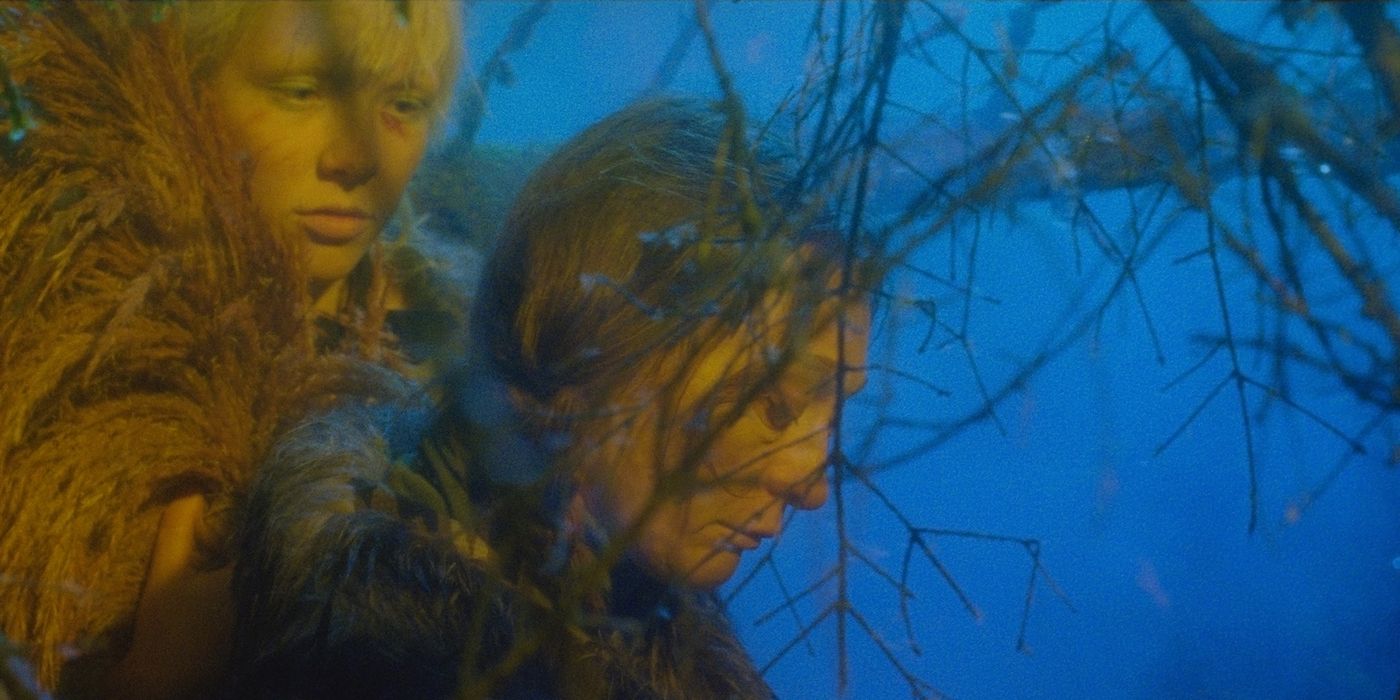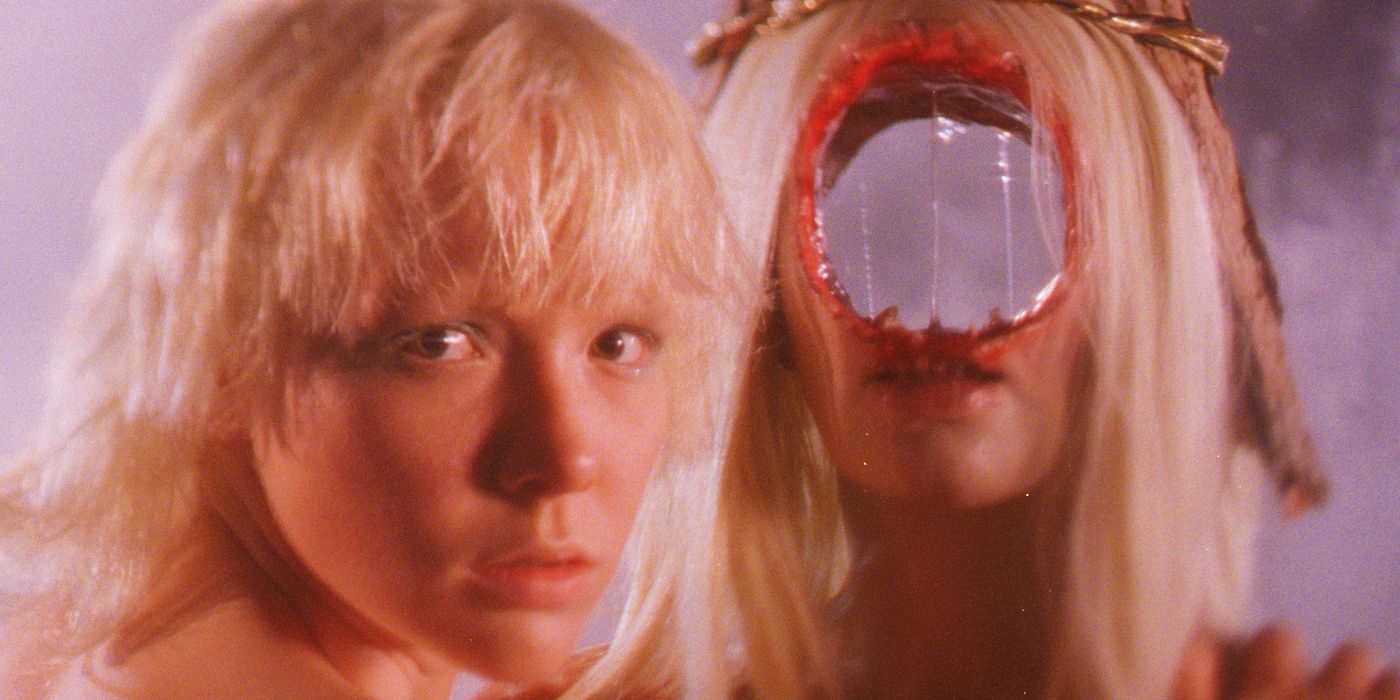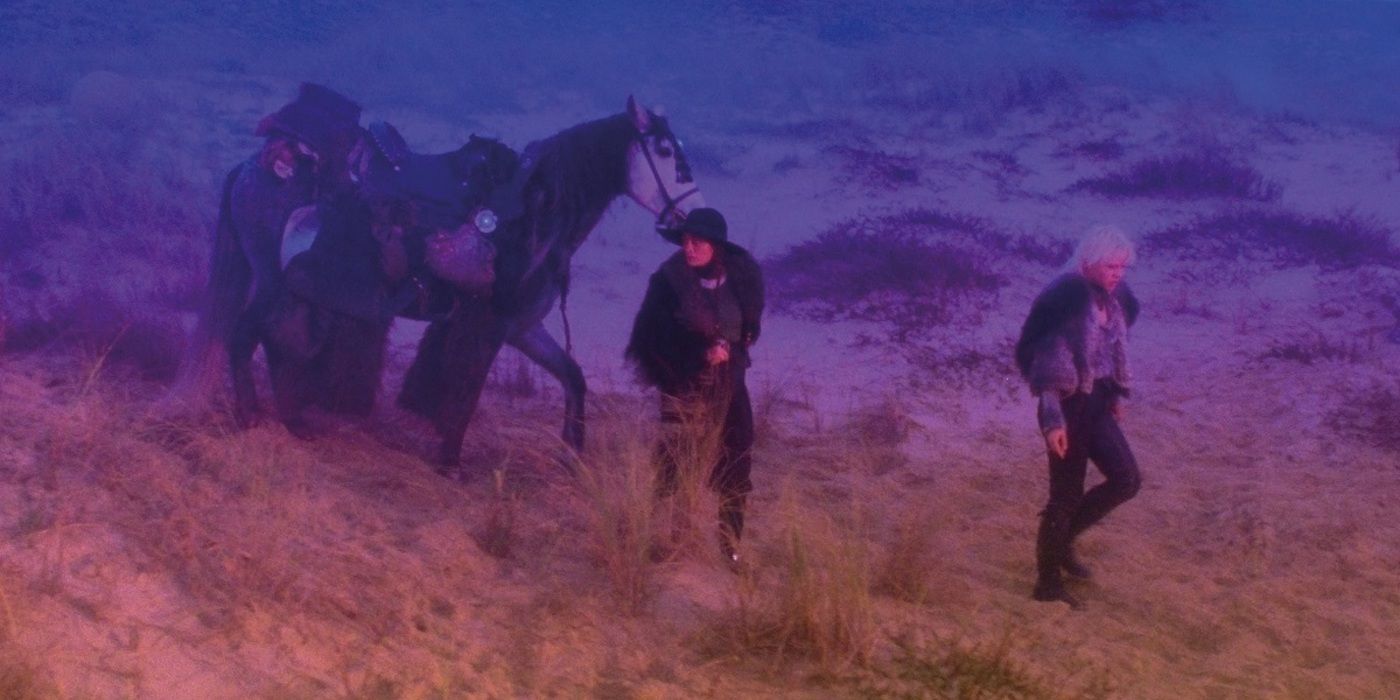Earth has become inhabitable, so humanity flees to a distant plant. The haven for all turns out to be a place of death for men. The atmosphere on this new planet — dubbed “After Blue” — causes increased body hair growth. For the men, that growth happens internally, causing death. This is the strange and peculiar setup for After Blue, written and directed by Bertrand Mandico, is an even stranger and more peculiar adventure.
The 1970s and '80s sci-fi throwback is a sapphic sci-fi fantasy adventure that follows Roxy (Paula Luna), a teenager who stumbles upon a woman, Kate Bush (Agata Buzek), buried up to her neck in the sand. Kate Bush (not the current chart-topping singer of the same name) promises to fulfill Roxy’s desires, but Roxy is unaware that she unwittingly unleashed a serial killer. Once she is freed, Kate sets off on a killing spree and disappears. Roxy and her mother, Zora (Elina Löwensohn), a hairdresser, are banished but are tasked with hunting down Kate if they wish to remedy the situation. Roxy is off on a loopy adventure full of danger, sexual encounters, ghosts, and more. To understand the depths of the zaniness of After Blue, one should watch the trailer beforehand.
After Blue is not for everyone, but it might have a strong following. It is a highly stylized picture that aims to transport its audience to another plane of existence. Mandico’s vision is uncompromising, with Pierre Desprats’ score and Pascale Granel’s cinematography bursting with vibrant vitality. The overt sexual overtones, paired with the graphic imagery, threaten to overwhelm the film. Still, it is wrapped up in a delectable package that has one surrendering their reservations to be immersed in its world. In terms of commitment to an aesthetic and particular film genre, After Blue is much like Anna Biller’s The Love Witch. There is a knowing jab at films that have rarely depicted women in a favorable light or entirely excluded their perspectives. After Blue acts as a reclamation of sorts from an era of sci-fi that sought to exploit and objectify women’s bodies — the film acts as an alternative. Most notably, Mandico's film feels like an extension of his previous feature, The Wild Boys.
The narrative is intriguing, with a setting that feels flawlessly otherworldly and people with an entirely new way of life. There is a broad strokes approach to crafting the world of After Blue, but the film effectively gets one interested. Mandico is clearly envisioning a warped Garden of Eden, where uninhibited desire and need for structure clash. While the director gleefully plays with creating a very abstract reality of a planet inhabited by women, the film’s script and ongoing narration help tether the audience to the world so that they don’t get lost as the character develops and the world continues building. There is a very delicate balance at work here. As with most experimental films, there is the risk of losing the audience and never regaining their interest. This movie could have fallen into the “just vibes” category of experimental works, yet Mandico manages to have a solid narrative to ground the whole endeavor.
With many ambitious projects, there is often something that is fumbled, but After Blue sticks the landing. The film is a slow-burn, moving at a languid pace that can lull one to sleep. But while the imagery is evocative and the project altogether an engaging sci-fi/fantasy, it does take things a step too far into the dreamlike atmosphere that is so carefully constructed. Two hours is quite a long time for audiences to commit to this adventure, a loosely constructed series of vignettes, each more trippy than the last. The erratic lighting choices, the constant bombardment of eccentric imagery, and the poetic and sometimes incoherent narration and dialogue can be a bit much after an hour. Luckily, the simplicity of the core plot and narrative ties everything together.
After Blue is a full-on sensory experience that thrives on its visual palette and effective score, which evokes the feeling of a wide scale and scope. If After Blue was shot entirely on a soundstage, that fact is expertly concealed. The success of a film like this relies on its ability to enrapture its audience. With the creative team’s firm grip on their vision, After Blue is a successfully trippy and transportive experience. To enjoy After Blue, one should be open to an experience that overtakes the senses. Despite the long runtime, it offers a wholly unique experience.
After Blue released in limited theaters on Friday, June 3. The film is 129 minutes long and not rated.



